The Toyota Alphard, a much-desired MPV used by businessmen and even politicians and government leaders today, in the early 2000s as one of the large MPVs in the Japanese market. Based on the Estima/Previa platform, it offered a more premium feel as well as more space inside with its larger dimensions.
As the Alphard began to spread around East Asia (initially through the reconditioned market), its popularity started to grow outside Japan. Rather than spend money on a large sedan, many people found the large MPV practical for daily use and it could even serve as a mobile office. And of course, it was also great for families with the extra seats. An ideal dual-purpose vehicle in the 21st century.
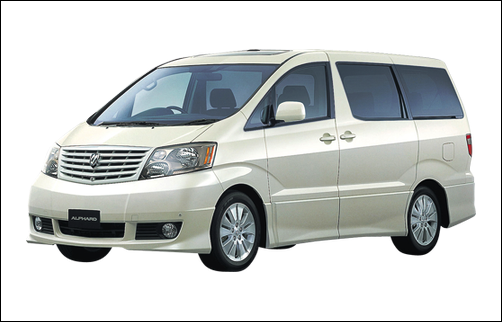
Akio Toyoda elevated Alphard image
However, the increased attention in Alphard development can be attributed to Akio Toyoda, who had decided to use an Alphard to travel to a meeting – instead of his usual Century limousine – and his vehicle was directed to move aside by the personnel on duty. The former company president and chairman felt the discrimination was unjustified and decided to elevate the image of the MPV so that it would become prestigious and respected.
Referred to as ‘Master Passenger’ (a reference to his title as ‘Master Driver’ at Toyota and Lexus), Toyoda would get designers to focus on ‘omotenashi’, the Japanese art of supreme hospitality. In time, the Alphard would become a desirable vehicle which even corporate leaders and government leaders would want to travel in.
![Lexus LM [2019]](https://www.motaauto.com/wp-content/uploads/2024/05/Lexus-LM-2019.jpg)
This would also have influenced Lexus, the company’s luxury division, which had never offered an MPV. At the time Lexus was born in 1989, MPVs were just people-carriers with no particular prestige attached to them so they were not for the brand. Nevertheless, with the popularity of the Alphard, it was clear that there was a niche for such a model and indeed, there was demand by Lexus customers in China for a large MPV from the brand.
It is likely that the Master Passenger (after all, he was also Chief Branding Officer) would have encouraged the addition of such a model to the Lexus range. But since it was an entirely new product with some uncertainties of demand, Lexus moderated costs by adapting the third generation of the Alphard. It was ‘Lexus-fied’ structurally and gained much higher specifications and had materials of higher quality.
![Lexus LM [2024]](https://www.motaauto.com/wp-content/uploads/2024/05/2024-Lexus-LM-4.jpg)
Only sold in East Asia
Lexus limited official sale of the LM, as the model was designated, to East Asia markets including Malaysia when it went on sale in 2019. Interestingly, although it was made in Japan, it was never offered for sale in that market.
Interest from other markets
Response to the LM was good and in Malaysia, every unit brought in was sold. The LM also attracted the attention of some other markets outside Asia and Toyota Europe too wanted the model, along with India and Australia – and Japan too. This led to the second generation being developed with a more global approach, particularly in areas of safety standards.
With the Alphard and the first generation of the LM, there were questions about how safe the MPV was when assessed with European standards like Euro NCAP – which they were never tested by. No doubt Toyota does ensure that all its models have high safety standards but rivals would exploit the lack of Euro NCAP reports.
With the new LM being offered in the European market officially, Lexus would have had to ensure that it meets the tough safety requirements in all respects. Helping in this area was the switch to the TNGA-based GA-K passenger car platform which offers high body rigidity and a lower centre of gravity. In spite of the LM likely to be a chauffeur-driven vehicle, it has been designed with the same driving feel and quality – referred to as the Lexus Driving Signature – as other models of the brand.
![Lexus LM [2024]](https://www.motaauto.com/wp-content/uploads/2024/05/Lexus-LM-2024-3.jpg)
This new generation is almost similar in size as the first one, which means it has the strong presence on the road. With the large proportions of the LM, especially the frontal area, aerodynamic optimisation of the body is very important and a number of measures have been incorporated which bring the drag coefficient to between 0.34 and 0.33.
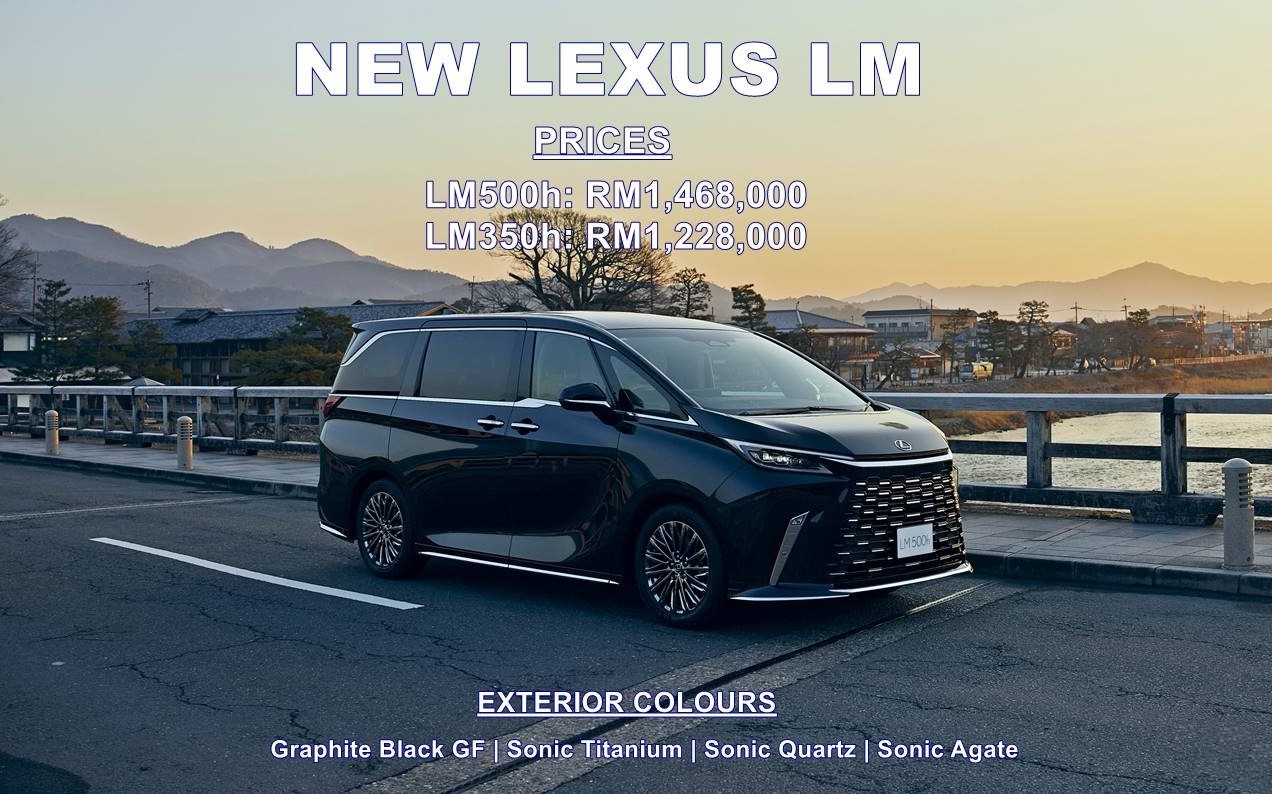
Another Spindle Grille interpretation
By now, the Spindle Grille is well known as a Lexus Signature element and, over the years, it has evolved with different models. The LM sees a major departure that gives a new frontal appearance which is still recognisable as a Lexus. The spindle shape has been compressed to create a large lower grille section and has thus become more of a ‘spindle body’. Without a frame, the grille is unified with the body while a Lexus-first is the satin-effect hot stamping on the main part of the black grille and body colour on molding.
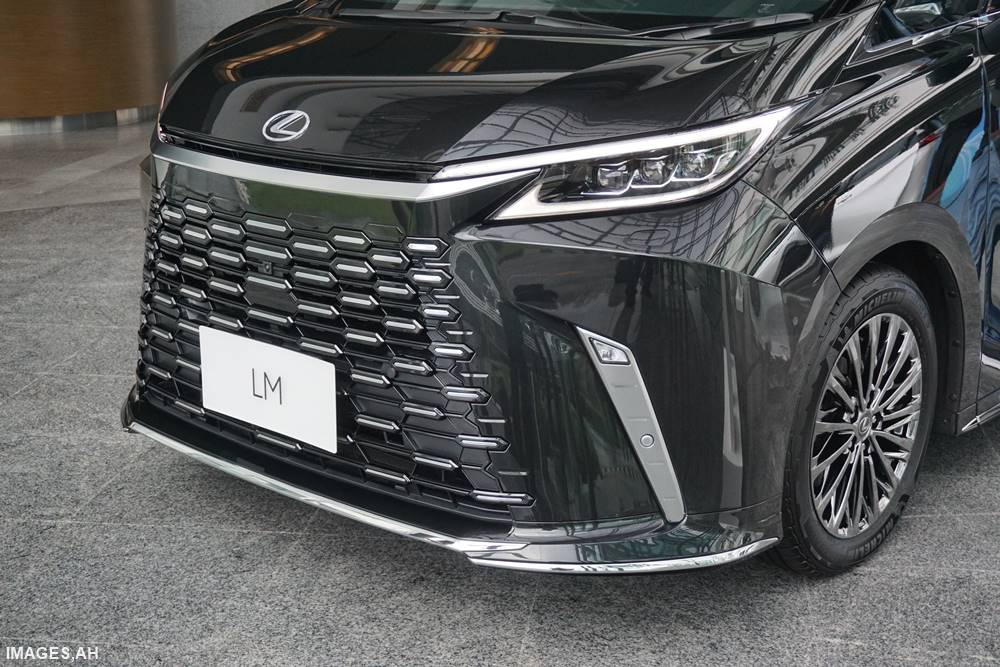
![Lexus LM [2024]](https://www.motaauto.com/wp-content/uploads/2024/05/Lexus-LM-2024-10.jpg)
At the rear, the L-emblem is now replaced by the brand name over the signature L-shaped light bar lamp which runs across the full width of the back door. There is also an additional bar lamp on top of signature bar lamp for better visibility and reinforcing the vehicle’s premium image.
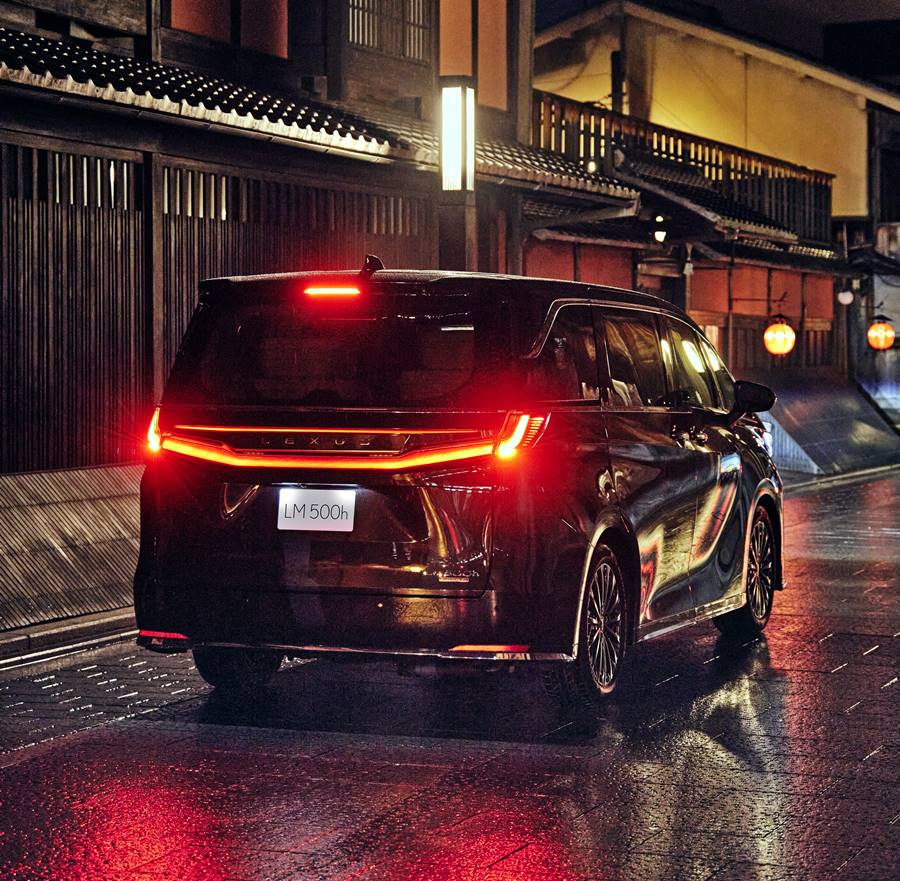
Ultimate omotenashi within
The new LM’s interior has been designed to provide the ultimate Omotenashi on wheels, an ideal personal living space or a mobile office (or both). There is a choice of just two rear seats (LM500h) or 5 rear seats (LM350h) with an additional three seats in the third row. Maximized use is made of the tall interior to provide a space resembling a modern living room.
![Lexus LM [2024]](https://www.motaauto.com/wp-content/uploads/2024/05/Lexus-LM-2024-3-1.jpg)
![Lexus LM [2024]](https://www.motaauto.com/wp-content/uploads/2024/05/Lexus-LM-2024-4-1.jpg)
![Interior Lexus LM [2024]](https://www.motaauto.com/wp-content/uploads/2024/05/Interior-Lexus-LM-2024.jpg)
Like the first generation LM, the side windows have been made as large as possible, so that everyone on board always has a perception of the direction of travel and the vehicle’s orientation. They can be opened and there are twin fixed windows in the roof above the rear passenger compartment.
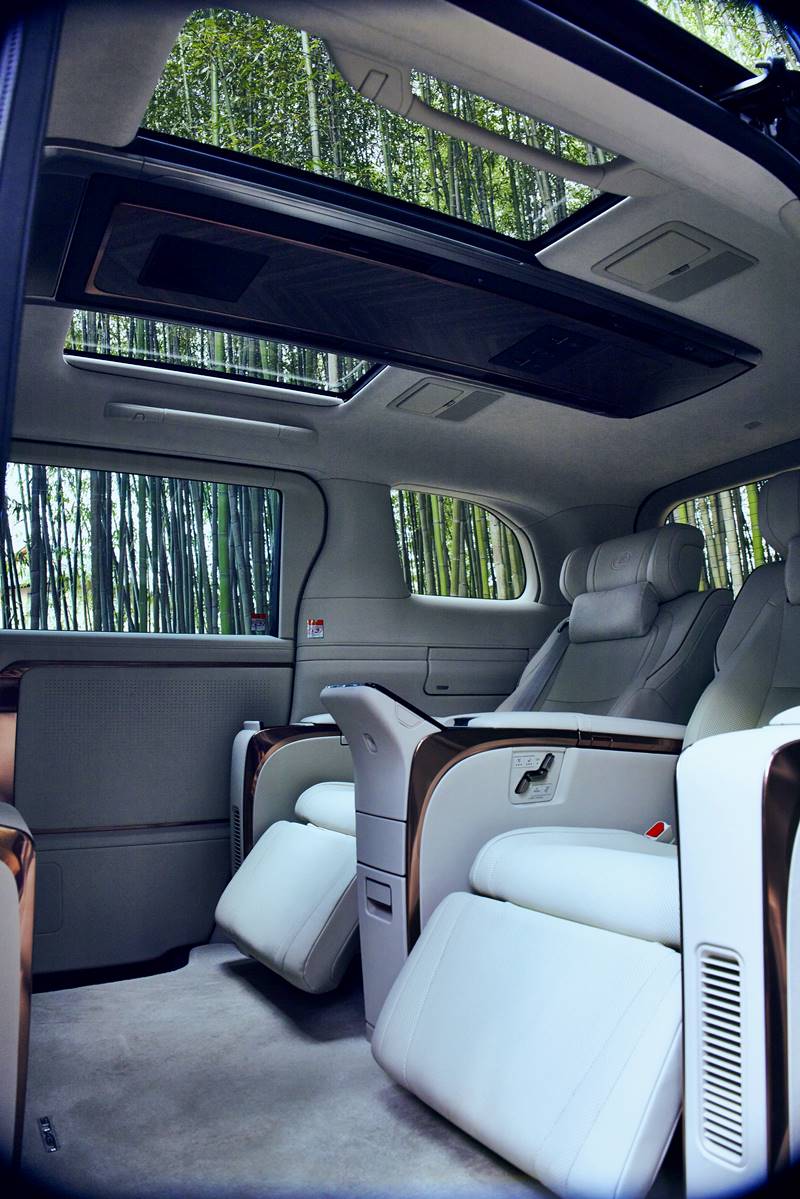
Overhead are twin glass roofs with power-operated sunshade. These can be opened or closed individually or together. Those on the side windows operate from top to bottom, allowing them to be partially closed to shield from sunlight while still having view of the outside.
The mood in the cabin can be enhanced with a wide range of different indirect ambient lighting colours. Up to 14 shades are available in 5 different themes and Shadow Lighting is also provided at floor level in the LM500h.
![Lexus LM [2024]](https://www.motaauto.com/wp-content/uploads/2024/05/Lexus-LM-2024-1.jpg)
![Lexus LM [2024]](https://www.motaauto.com/wp-content/uploads/2024/05/Lexus-LM-2024-2-1.jpg)
For the 4-seater, there is a partition which completely seals off the rear of the cabin from the front section. The partition, with a die-cast magnesium frame for extra rigidity, houses a 48-inch wide-screen display and above it is a glass panel that can be raised or lowered. For added privacy, the panel can also be blurred.
The two passenger seats are inspired by the seats in first-class airline cabins and are among the most advanced and comfortable ever offered in a Lexus model. They have been developed with detailed analysis of passenger body movement using data based on motion capture and sensory evaluation.
![Lexus LM [2024]](https://www.motaauto.com/wp-content/uploads/2024/05/2024-Lexus-LM-1.jpg)
Typically, seats in MPVs are at a raised level, creating a high centre of gravity for the passenger. This increases the experience of side-to-side and head-sway movement, undesirable conditions which the designers aimed to eliminate. Numerous approaches were taken to counter these undesirable motions so passengers can maintain a stable line of sight.
As would be expected, all seat adjustments are powered and from control panels (resembling smartphones), everything can be managed without having to sit up or stretch the arms out. Even the opening and closing of the doors is done with just the press of a button (by the passenger or driver).
![Lexus LM [2024]](https://www.motaauto.com/wp-content/uploads/2024/05/2024-Lexus-LM-6-1.jpg)
As the usage of the 7-seater with 5 rear seats is envisaged to be for family outings or as a mobile office, there is a lot of variability in the seat configurations. They can be folded completely flat and moved over a range of more than 480 mm.
The new LM is also the first model in the world to provide a dynamic voice recognition function that responds specifically to commands from rear passengers. Microphones in the seats are positioned to recognise if it is the left or right side passenger speaking. With this accurate identification, air conditioning, seat position and lighting can be adjusted specific to the passenger’s location.
![Lexus LM [2024]](https://www.motaauto.com/wp-content/uploads/2024/05/DSC05130.jpg)
![Lexus LM [2024]](https://www.motaauto.com/wp-content/uploads/2024/05/2024-Lexus-LM-1-1.jpg)
Front occupants also considered
Though the focus is very much on the rear occupants of the LM, the comfort of the front two occupants is also not overlooked. After all, there may also be occasions when the vehicle owner may use the vehicle himself or herself (on weekends, for example).
![Lexus LM [2024]](https://www.motaauto.com/wp-content/uploads/2024/05/20240520_150346.jpg)
The principles of Omotenashi are therefore also applied, with the driver’s area using Tazuna concept for easy, intuitive use of controls and viewing of information. With thoughtful positioning of the steering wheel, pedals and seat, the driver will feel at one with their vehicle and be able to intuitively control it.
![Lexus LM [2024]](https://www.motaauto.com/wp-content/uploads/2024/05/Lexus-LM-2024-5.jpg)
Access to the cabin can be from either side through power sliding doors. Besides a more convenient design for the outside door handles where the unlatch switch is accessed by just gripping the handle while pulling, the inside handle has integration of the pull handle and door handle enable the door to be opened with single operation. The door can be unlatched by placing a hand on the door armrest pull handle and pressing door opener switch with the thumb.
![Lexus LM [2024]](https://www.motaauto.com/wp-content/uploads/2024/05/2024-Lexus-LM-7.jpg)
For safety when exiting, the front doors have an e-Latch system with SEA (Safe Exit Assist). This employs sensors towards the sides and rear of the vehicle to detect any vehicles or cyclists approaching. If detected, the door opener switch on interior side will be deactivated to prevent opening include rear power sliding doors.
![Lexus LM [2024]](https://www.motaauto.com/wp-content/uploads/2024/05/2024-Lexus-LM-6.jpg)
Luggage volume limitations
Where luggage storage, the LM has the same limitations as any MPV in that when all the seats are in use, the available volume is not great since the third row is all the way to the back. Even with just two seats in the LM500h, the maximum available volume is 752 litres as the seats are set quite far back to provide very generous legroom. The LM350h can have to 1,191 litres when the seats on the third row are flipped to either side. The high ceiling helps to provide some extra volume.
The tailgate opens up high and in the early MPVs, shorter people would have difficulty reaching up to pull the door down. Some models even had straps to assist in this. However, most premium MPVs and even SUVs now have powered tailgates that go up and down at the touch of a button or even by putting a foot under the bumper.
![Lexus LM [2024]](https://www.motaauto.com/wp-content/uploads/2024/05/Lexus-LM-2024.jpg)
Lexus designers have added a convenience which addresses the fact that as the door rises while opening, anyone standing directly behind would have to move out of the way. The solution has been to place the switch at the side corner of the vehicle, just above the tail light unit. A simple idea and yet one which makes a lot of sense.
Only hybrid electric drivetrains
The LM is available with two drivetrains, both now using hybrid electric vehicle (HEV) technology which Toyota pioneered for mass-produced vehicles over 35 years ago. Lexus too was a pioneer in HEV technology when it introduced the RX400h in 2005 which was the first luxury model in the world to offer the benefits of pairing an internal combustion engine with an electric motor.
![Lexus LM [2024] (4)](https://www.motaauto.com/wp-content/uploads/2024/05/Lexus-LM-2024-4.jpg)
Both models have self-charging battery systems which means not having to look for a charging station at any time. The newly developed high-output, low-resistance nickel metal hydride (NiMH) battery pack is mounted under the central area of the vehicle
The LM500h has a newly developed Parallel Hybrid System which uses a 2.4-litre 4-cylinder Dual VVT-i petrol engine with a turbocharger and intercooler, and a D-4ST direct fuel injection system. Maximum output of the engine is 275 bhp/460 Nm, with two motor generators (electric motors) at the front and rear axles. The front motor produces 87 bhp/292 Nm while the rear motor produces 103 bhp/169 Nm.
![Lexus LM [2024]](https://www.motaauto.com/wp-content/uploads/2024/05/2024-Lexus-LM-2.jpeg)
Operationally, the system output of the hybrid system is 371 bhp which is distributed to all four wheels through the 6-speed Direct Shift Automatic Transmission and DIRECT4 All-Wheel Drive system. The E-FOUR system with an e-axle intelligently manages front-rear torque distribution between 100:0 and 20:80, depending on driving and surface conditions.
The powertrain of the LM350h has a 2.5-litre 4-cylinder petrol engine with VVT-iE, with high-pressure fuel delivery by the D-4S direct fuel injection system. Maximum output of the naturally-aspirated engine is 190 bhp/239 Nm. Unlike the :M500h, the LM350h powertrain uses a Series Parallel Hybrid System with a single high output motor at the front that generates 182 bhp/270 Nm (combined system output of 250 bhp). Only the front wheels are driven with a hybrid transaxle that employs an Electronically Controlled Continuously Variable Transmission (eCVT).
![Lexus LM [2024]](https://www.motaauto.com/wp-content/uploads/2024/05/Lexus-LM-2024-11.jpg)
The suspension system of the LM consists of front MacPherson struts and rear double wishbones with trailing arms. Adaptive Variable Suspension (AVS) is fitted as standard and in a world-first for Lexus, Frequency Sensitive Valves are used in the dampers. This modifies damper performance at micro-amplitude and high-frequency levels, reducing the tiny shocks from the road surface.
Compared to the previous generation, the variable damping force range has been expanded, enabling compatibility with a broader range of road surfaces and driving operations. The AVS also features linear solenoid actuators, enhancing performance for a comfortable ride and better steering response.
Safety systems and driver assistance
As mentioned earlier, the new LM is engineered for wider global sale and so it meets safety requirements of more regions, not just Japan and China. It has the latest generation of the Lexus Safety System + (LSS+) which is an integrated Active Safety and Driver Assistance system. For this second generation, LSS+ has had its capabilities greatly expanded with new technologies, especially imaging technologies (radar and camera) that can provide better recognition of pedestrians and objects around the vehicle.
Lexus Teammate is a new and advanced driver assistance technology developed from Toyota’s Mobility Teammate Concept. Classified as a SAE Level 2 autonomous drive feature, it provides two functions: Advanced Drive and Advanced Park.
Advanced Drive can be used at speeds up to 40 km/h, typically in traffic jams. It will only operate when Dynamic Radar Cruise Control and Lane Tracking Assist are active, and assist the driver in recognition, judgement and operation. It can also perform more complicated driving tasks, including maintaining a set distance from other vehicles, changing lanes, or even passing other vehicles.
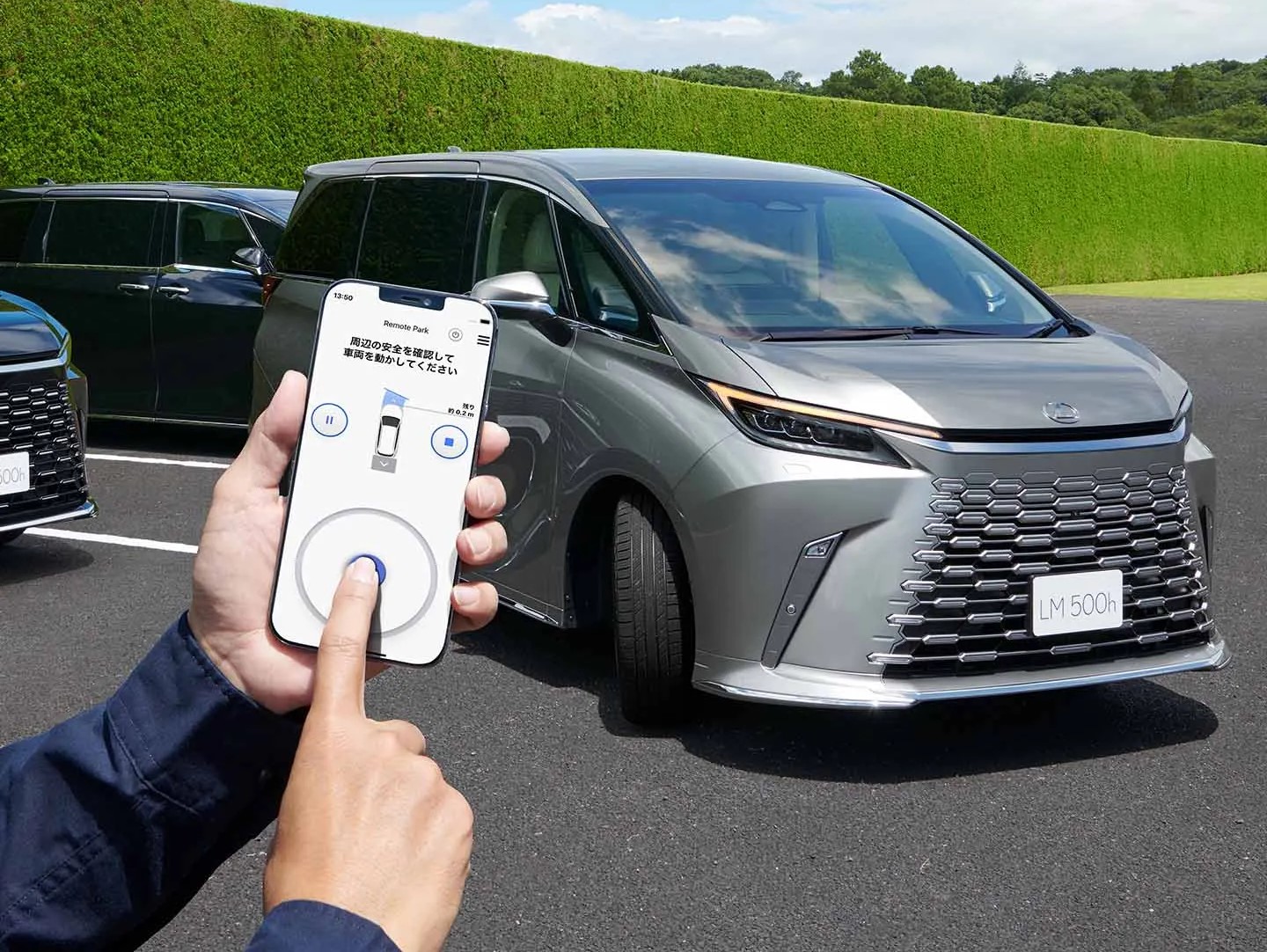
With Advanced Park, the size of the LM is no longer reason to feel stressed when parking. The fully automatic system can manoeuvre the vehicle into a parking bay without any driver involvement (other self-parking systems usually require the driver to control the speed of movement). The system controls the steering, acceleration, braking and even changes gears if necessary for parallel or reverse parking (as well as exiting a parking bay).
“The new Lexus LM undoubtedly redefines the concept of exclusive personalised luxury travel,” said Lexus Malaysia President, Datuk Ravindran K. “As you can see, the new model once more demonstrates value craftmanship and timeless elegance along with a striking design and unmatched comfort and performance which is a world apart from what is available in the segment today.”
![Lexus LM [2024]](https://www.motaauto.com/wp-content/uploads/2024/05/Lexus-LM-2024-7.jpg)
![Lexus LM [2024]](https://www.motaauto.com/wp-content/uploads/2024/05/lEXUS-lm-2024-2-696x394.jpg)
